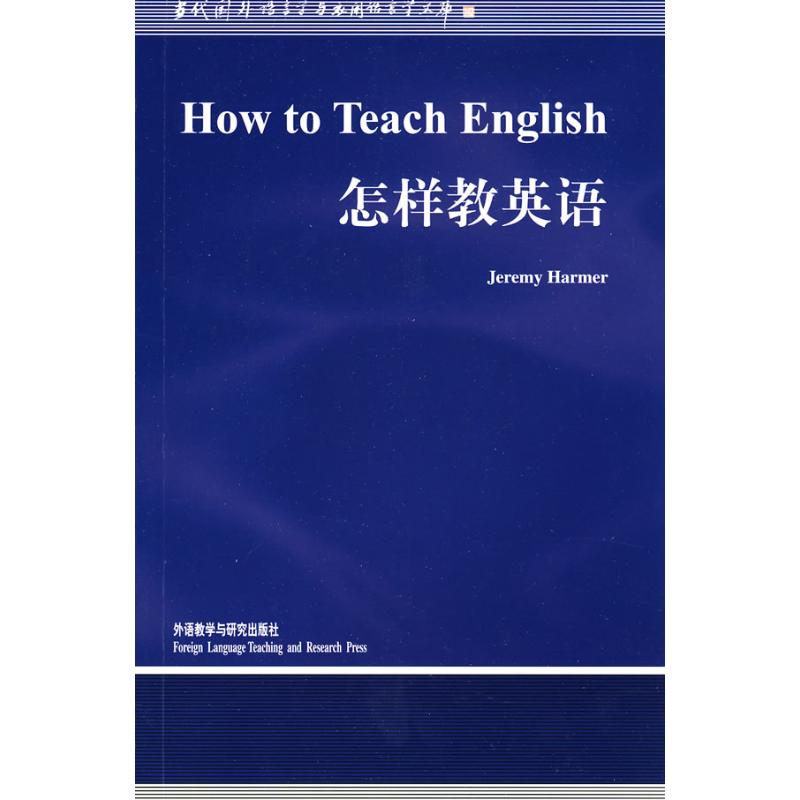- ISBN:7560019021
- 装帧:平装
- 册数:暂无
- 重量:暂无
- 开本:16开
- 页数:暂无
- 出版时间:2000-08-01
- 条形码:9787560019024 ; 978-7-5600-1902-4
内容简介
An introduction to the practice of English language teaching How to Teach English is for teachers at an early stage in their careers and for teachers preparing for examinations such as The Certificate in English Language Teaching to Adults or The Certificate in TESOL. This book gives clear examples and explanations of current teaching practice which teachers can put into immediate use. How to Teach English offers: ideas on what makes a good teacher and what makes a good learner descriptions and examples of language teaching methods. and a new model of good leaching practice-the 'ESA'model an essential introduction to grammar teaching sequences for grammar, vocabulary, and the individual language skills ideas on the exploitation of textbooks and the planning of lessons a 'What if?' review of common problems in the classroom a Task File of photocopiable training tasks appendices on equipment, further reading and phonetic symbols Jeremy Harmer is the author of the highly acclaimed and ever popular The Practice of English Language Teaching.
目录
Acknowledgements
Introdction
1 How to be a good teacher
What makes a good teacher
How should teachers talk to stueents
How should teachers give instructions
Who should talk in class
What are the best kinds of lesson
How important is it to follow a pre-arranged plan
Conclusions
Looking ahead
2 How to be a good learner
Why is it difficult to describe a good learner
How imprrtant is the students'motivation
Who is responsible for learning
What is reponsible for learning
What's spe about teaching adults
How shoule we teach the sifferent levels
Conclusions
Looking ahead
3 How to manage teaching and learnign
How should teachers use their physical presence in class
How Should teachers use their voices in class
How SHould teachers mark the stages of a lesson
What different student groupings can teachers use
How can teachers evaluate the success or failure of their Lessons
Conclusions
Looking ahead
4 How to descridb learnign and teaching
5 How to describe language
6 How to teach laguage
7 How to teach teading
8 How to teach writing
9 How to teach speaking
10 How to teach listening
Conclusions
Looking ahead
节选
第十章怎样教听力
作者在这一章里首先讨论了听力课教学的重要性。英语作为一门世界性的语言,其变体间的差异是不容忽视的,这种差异不仅体现在语音方面,还体现在语法方面。通过听力课教学,学生可以全面地了解到各种英语变体间的差异。听力材料通过广告、新闻广播、诗歌、讲演、电话对话等形式使学生真切地接触、感受语言,从而很自然地获得语法、词汇方面的知识和关于语言、节奏、语调、音高、重音方面的重要信息。这对于学生的语言习得(languageacquisition)是大有益处的。
听力课教学有别于其他教学活动:首先,听者往往难以控制甚至无法控制所听材料的语速,录音内容的不间断性难免引起学生紧张焦虑的情绪。作者因此建议教师引导学生先听懂大意,而不是立刻获取细节信息。其次,听力材料中的语言往往不完整,不正式,经常出现重复、停顿,学生只有了解了听力材料中语言的口语体特征,才能从有声言语中有效地获取意义。
如何教听力?作者认为有六条准则要遵守:要有良好的教学设备做保障;上课前,教师和学生都要做必要的准备;学生往往需要听两到三遍,以补充听**遍时丢掉的信息;教师应该鼓励学生注意听力材料的内容,而不仅仅是语言形式本身;教师应该根据学生的听力水平布置不同的听力任务;教师要充分利用教材。学生的需求、程度和兴趣将决定教师所使用的听力材料。尽管听力材料不可能总是绝对地"真实"(Authentic),但至少应该是"逼真"(Realistic)的。作者按照不同的等级分别举例说明听力课教学是如何循序渐进的,表明课前的准备工作是一个重要的环节。作者*后指出录像可以提供*生动的语言和文化信息。
……
-

了不起的盖茨比(纯英文)/床头灯英语.3000词读物
¥5.5¥12.8 -

茶花女
¥5.2¥12.0 -

地心游记(纯英文)/床头灯英语.3000词读物
¥8.7¥15.8 -

THE LITTLE PRINCE-小王子
¥6.9¥19.8 -

考研英语背单词20个词根词缀
¥2.2¥3.2 -

视听说教程2学生用书
¥17.6¥45.0 -

MADAME BOVARY-包法利夫人
¥13.3¥36.8 -

我有所念人,隔在远远乡
¥22.4¥49.8 -

命案目睹记
¥13.2¥33.8 -

巴黎圣母院
¥5.0¥15.5 -

理想丈夫
¥11.1¥28.0 -

浮生六记(汉英对照)
¥18.6¥65.0 -

小妇人(纯英文)/床头灯英语.3000词读物
¥6.4¥15.8 -

赖世雄美语音标(美语从头学)
¥16.5¥25.0 -

名著名译英汉对照读本马克.吐温短篇小说选
¥15.4¥28.0 -

了不起的盖茨比:经典全译本
¥8.5¥25.0 -

英语学习-大家小书
¥14.7¥36.0 -

朗文经典-文学名著英汉双语读物-第七级(全5册)-适合高一.高二
¥25.8¥86.0 -

企鹅口袋书系列·伟大的思想20:论自然选择(英汉双语)
¥10.1¥14.0 -

恋爱中的女人-中译经典文库-世界文学名著-第五辑
¥9.7¥29.0













